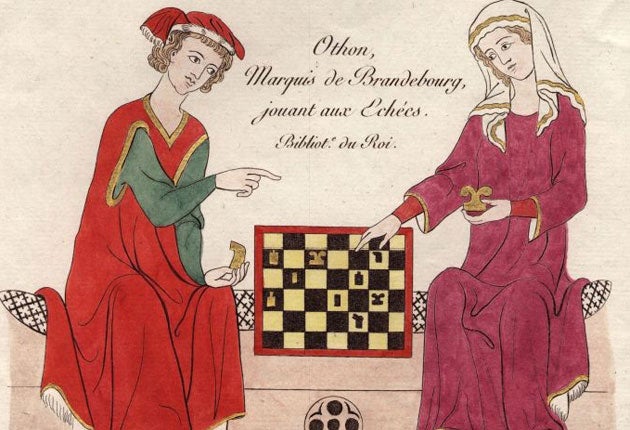The Timeline: Board games

Your support helps us to tell the story
From reproductive rights to climate change to Big Tech, The Independent is on the ground when the story is developing. Whether it's investigating the financials of Elon Musk's pro-Trump PAC or producing our latest documentary, 'The A Word', which shines a light on the American women fighting for reproductive rights, we know how important it is to parse out the facts from the messaging.
At such a critical moment in US history, we need reporters on the ground. Your donation allows us to keep sending journalists to speak to both sides of the story.
The Independent is trusted by Americans across the entire political spectrum. And unlike many other quality news outlets, we choose not to lock Americans out of our reporting and analysis with paywalls. We believe quality journalism should be available to everyone, paid for by those who can afford it.
Your support makes all the difference.3500BC: Senet
Discovered in Predynastic and First Dynasty burials of Egypt, Senet is believed to be the world's oldest board game. Meaning "game of passing", Senet consisted of a grid of 30 squares, arranged in three rows of 10, and two sets of pawns, though the exact rules are the source of much debate. A copy of the game was found buried with Tutankhamun.
1400BC: Dice
Sophocles claimed that Palamedes invented dice in about 1400BC and, sure enough, cubical stones and clay dice have been found from this period with numbers on their faces. In truth, dice were developed independently by many ancient cultures around the world.
200BC: Snakes and Ladders
Snakes and Ladders originated in India as a game based on morality, where the progression up the board was to teach children about good and evil, with climbing up ladders representing good, and sliding down snakes representing evil. During the British rule of India, the game made its way back to these shores and it was taken to the US as "Chutes and Ladders" in 1943 by Milton Bradley.
1935: First board-game millionaire
Although a number of people contributed to creating Monopoly, Charles Darrow is often (wrongly) credited with being the sole designer. Having sent the game to toy manufacturers Parker Brothers in 1934, it was initially rejected for being too complicated, too technical and taking too long to play. After hearing about promising sales in Philadelphia, the company bought the game from Darrow in 1935. It was the best-selling game of the year, making Darrow the first millionaire board-game designer.
1957: First chess computer program
Although the origins of chess date back to the sixth century, in 1957 the very first computer programs that could play a full game of chess were developed. However, it wasn't until 1977 that a chess computer (Chess 4.6) was successful at a major chess tournament.
2011: Battleship: The Movie
Battleship was introduced as a pad-and-paper version in 1931 before being turned into the familiar board game. The simple naval-warfare guessing game has had a slick makeover for the cinema, though: the film cost $200m to make and the plot includes an alien invasion.
Join our commenting forum
Join thought-provoking conversations, follow other Independent readers and see their replies
Comments